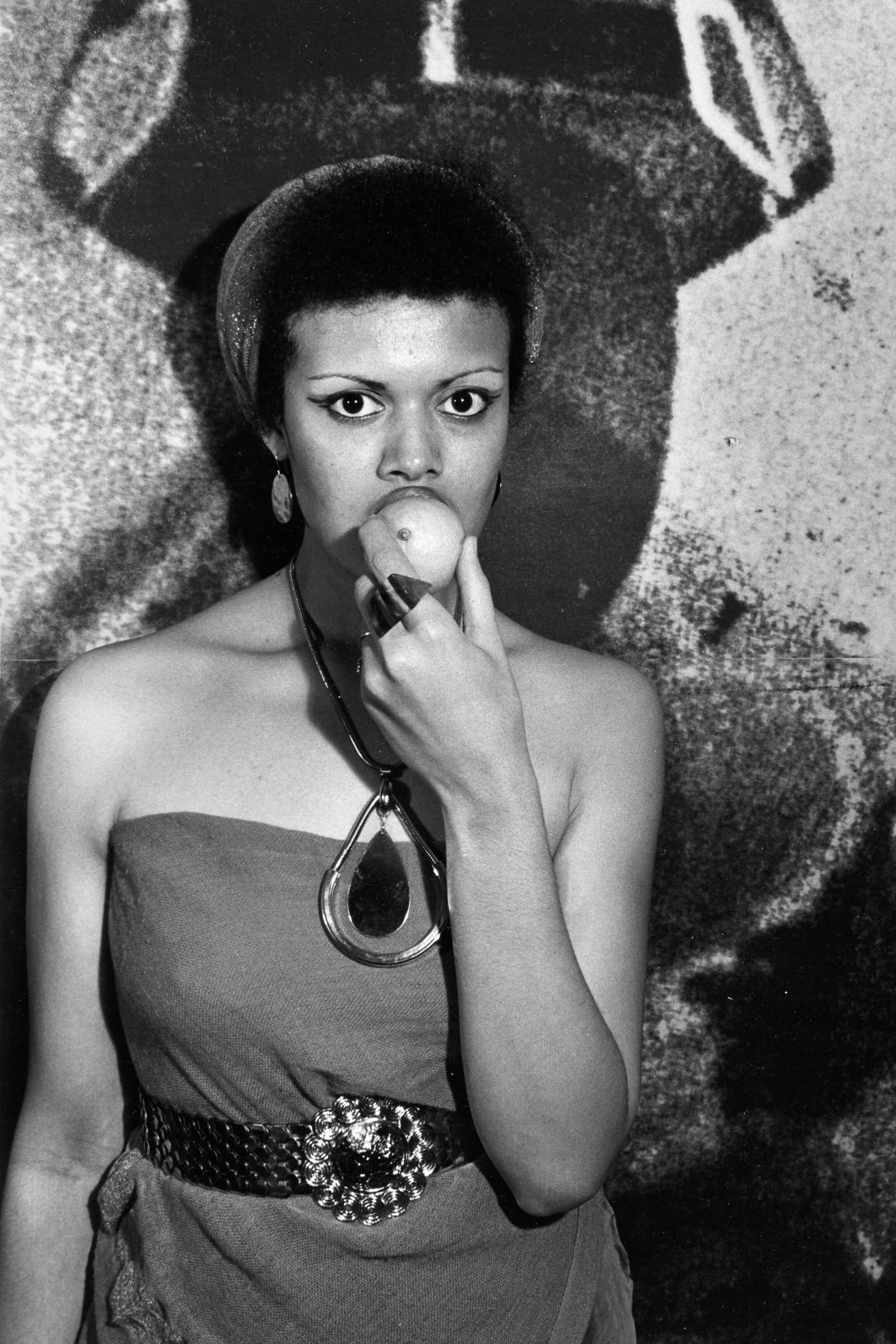Spring introduces a time of blossoming, reawakening and milder weather. Symbolist painter Gustav Klimt created a beautiful visual ode to the season with his flower and greenery-inspired Italian Garden (1913) painting. But spring also invites us to discover something new. With this in mind, here are three intriguing Houston spring art exhibitions to help usher in the season.
South Side Chi-Town In H-Town
Hungarian-French photographer Gyula Halász, better known as Brassaï, perfected the foggy Paris night scene suffused with light. One lesser known aspect of Brassaï’s oeuvre were his early 1930s Parisian nightlife photos, specifically images captured at the Cabane Cubaine in Montmartre. Fast forwarding to the 1970s, the late photographer Michael Abramson took inspiration from Brassaï when he set out to capture club goers on the South Side of Chicago.
The Christopher Blay-curated exhibit “Pervs, Peppers, and the High Chaparral: Michael Abramson’s Chicago South Side Photographs” takes viewers to a bygone era. It is on view at the Houston Museum of African American Culture through this Saturday, March 30. This is an exhibit steeped in Chicago culture.

Abramson’s photos captured South Side nightlife in all its complexity. A voyeuristic white photographer, he captured Black club goers through the lens of the white gaze, as Blay suggests. Clubs that Abramson visited included Perv’s House, Pepper’s Hideout, the High Chaparral and the Patio. Pervis Staples (of The Staple Singers) and Johnny Pepper, both nightclub owners, would go on to become South Side legends.
Abramson’s photos reveal a world of uber-stylish ’70s sartorial swag, music and togetherness. The photos also celebrate Blackness, individuality and queerness. These are pictures ahead of the time. Some characters from this world included Helen Wooten, Magellan the pimp and Flukey Stokes. But most of Abramson’s subjects were regular people, and he brilliantly captured their personalities, anonymity and sense of style.
“I was responding to this situation how Brassaï would to the nightclubs and cabarets,” Abramson once stated. “What was happening in Paris during the thirties was not that different from the South Side of Chicago during the seventies and what’s going on tonight. . .
The Allure of Plant Life
French impressionism leader and avid gardener Claude Monet once remarked: “The richness I achieve comes from nature, the source of my inspiration.” Naturally, Monet’s idyllic, picture-perfect garden at Giverny still exists in all its verdant splendor. Painter Janet Alling’s survey “Plant Life,” which is being exhibited at Erin Dorn’s new Seven Sisters Gallery through April 6, reveals a love of flora rivaling Monet’s.
Describing herself as a “modern realist painter,” Alling’s work sometimes veers into surrealism. For example, her magnum opus among the works displayed, Giant Gloxinia I (1972), powerfully establishes a dream-like, viridescent scene.
The strength of Alling’s work lies in the paradox that plant life, while inherently beautiful, can be contradictory and imperfect. For example, the ominous, dystopian skies of Apocalypse (1983) are dominated by various shades of yellow and gray. Paintings of caladium and coleus plants capture the harmony (or tension) between complementary colors like red and green.
During the ’70s and ’80s, Alling was represented by Jill Kornblee’s legendary Kornblee Gallery in New York City, which famously also championed Alex Hay, Dan Flavin and Arte Povera painter Michelangelo Pistoletto. Now based in Providence, Rhode Island, Alling’s perspective on plant life is intellectual and refreshingly sophisticated.
The overall message of her art? Consider the complexity of plant life and recreate green spaces we rarely see in big cities these days.
Abstract Geometric Art
A highly imaginative use of color and clever geometric abstraction is a signature element of artist Jonathan Leach’s work. One of his most well-known pieces, the Ghost Grid (2016) mural at Lawndale Art Center, matched the large scale aspect of Houston as a sprawling metropolis.
Leach’s current show, “Jonathan Leach: Every Last Moment,” is being exhibited at Gallery Sonja Roesch through this Saturday, March 30. It reflects the artist’s interest in pushing abstract art’s conceptual limits.
One area which Leach excels in is reimagining the grid. Art critic Rosalind Krauss writes in her 1979 essay titled Grid: “There are two ways in which the grid functions to declare the modernity of modern art. One is spatial, the other temporal. In the spatial sense, the grid states the autonomy of the realm of art.
“Flattened, geometricized, ordered, it is antinatural, antimimetic, antireal.
But Leach’s grid constructs, some of which are architectonic, go against Krauss’s stance. The sculpted or painted grids of Untitled (2016), Exit (2015) and Blue Wednesday (2022) all challenge the idea of an ordered perfect grid.
Further, Leach experiments with post-Kandinsky curved lines in Hydra (2023). Titling one dark, maze-like painting Tenebrae (2024), Leach also brings Dario Argento’s giallo film with the same title to mind. How he uses spatial dimensions, color and bisecting lines to suggest movement is unique.
Overall, what Leach achieves is a complex set of works that keep the audience intrigued and guessing.
The exhibit “Peppers, Pervs and the High Chaparral” is on view at the Houston Museum of African American Culture through this Saturday, March 30. Get more information here. The “Janet Alling: Plant Life” survey runs through April 6 at the Seven Sisters Gallery. Get more information here. The “Jonathan Leach: Evert Last Moment” exhibit is on view through this Saturday, March 30 at Gallery Sonja Roesch. Learn more here.